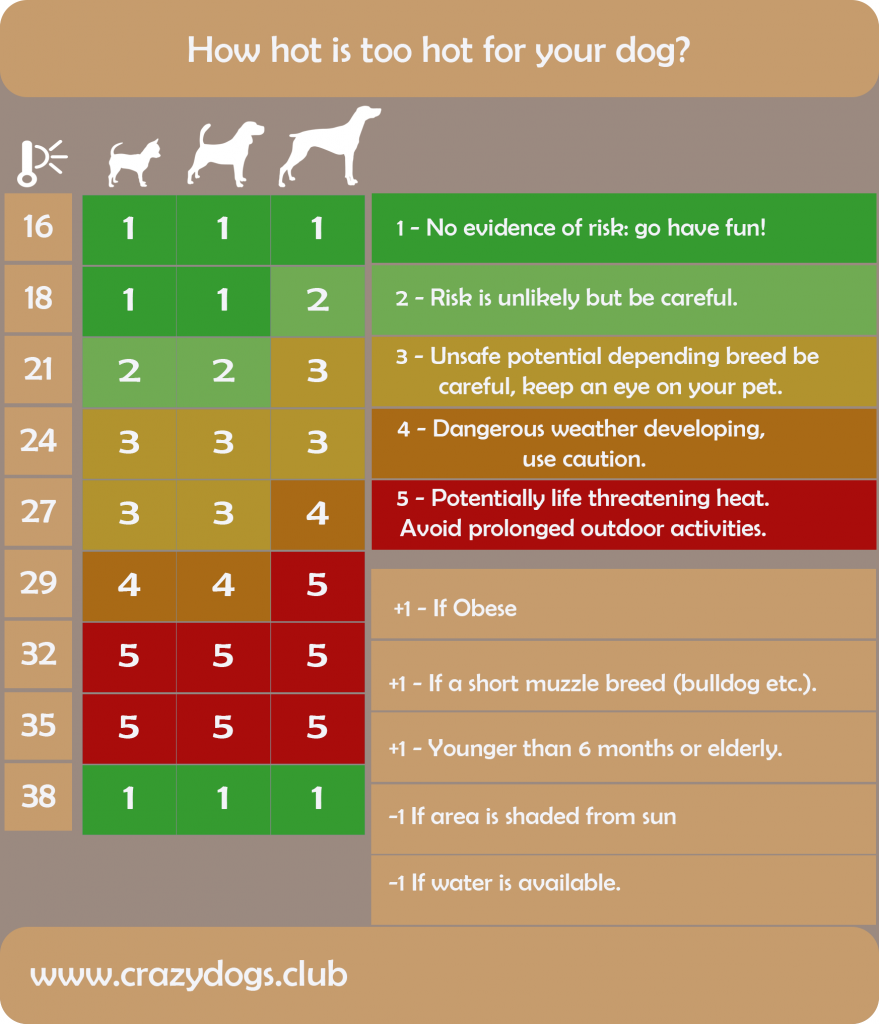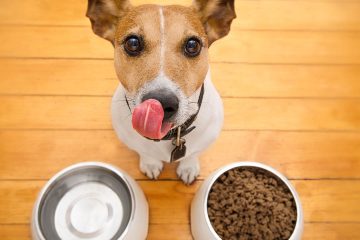When is it too hot for dogs?

When is it too hot for dogs?
The summer is finally here, and we are starting to have some hot days. Have you ever wondered about how the heat affects your dog?
Most dogs have fur, some thicker than others, and they feel the heat much quicker than we do. Plus, they mostly prefer running around rather than walking!
If you have your dog outside in the garden or take them for a walk, ensure you don’t take them out when temperatures are soaring. Try to make sure they have shade and water in the garden and attempt to walk them later in the day when temperatures have dropped off a little.
Most of us know it is unacceptable to leave your dog in a car on a hot day, but heat stroke can happen even in your own garden.
Here is a chart to guide you in checking whether the temperature is OK for your dog. Please add or subtract the points on whether they are obese or have shade and water. You will also need to consider the humidity as it will feel hotter if it’s high. In the UK, we don’t get as many hot days as we would like, but heat stroke can still happen.
Dog Heat Chart

Notice how the size and weight matter, and if you have a short-muzzled breed like a pug or a bulldog, they are susceptible to heat stroke as they find it difficult to cool air when they breathe, so you have to subtract a point straight away!
Please note this is just a guide and if you think it is too hot outside and you are not wearing a fur coat, do not leave your dog out in it. Many dogs love to sleep in the sun, and young or elderly dogs, don’t always move out of the sun when they should be in the shade. Keep an eye on them outside and ensure there is some shade available for them and water at all times.
First Aid
If you find a dog that is suffering from heat stroke, it can be a life or death situation.
Signs
- Panting heavily
- Excessive drooling
- Collapsed
- Vomiting
You will need to get their body temperature down
- Move them to a cooler/shaded area.
- Cool them down with cool water, not cold, by dousing them. You could use wet towels instead.
- Let them drink small amounts of water.
- Monitor until their breathing settles.


